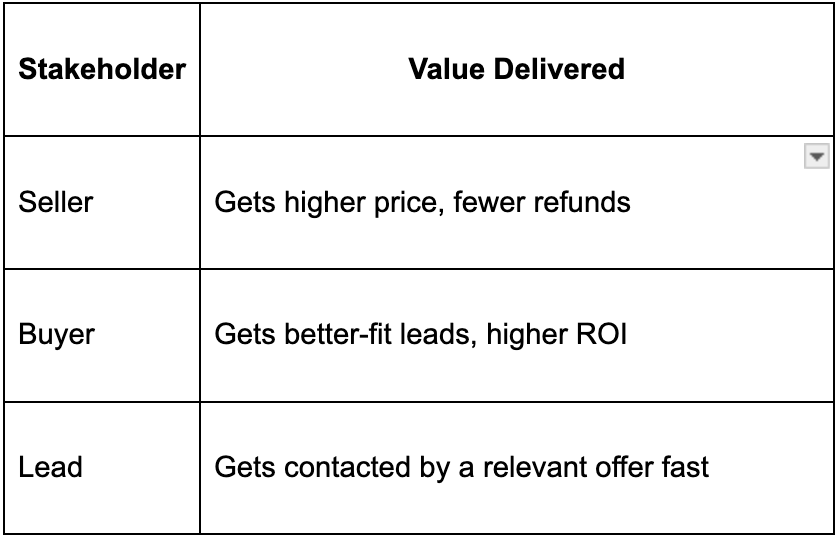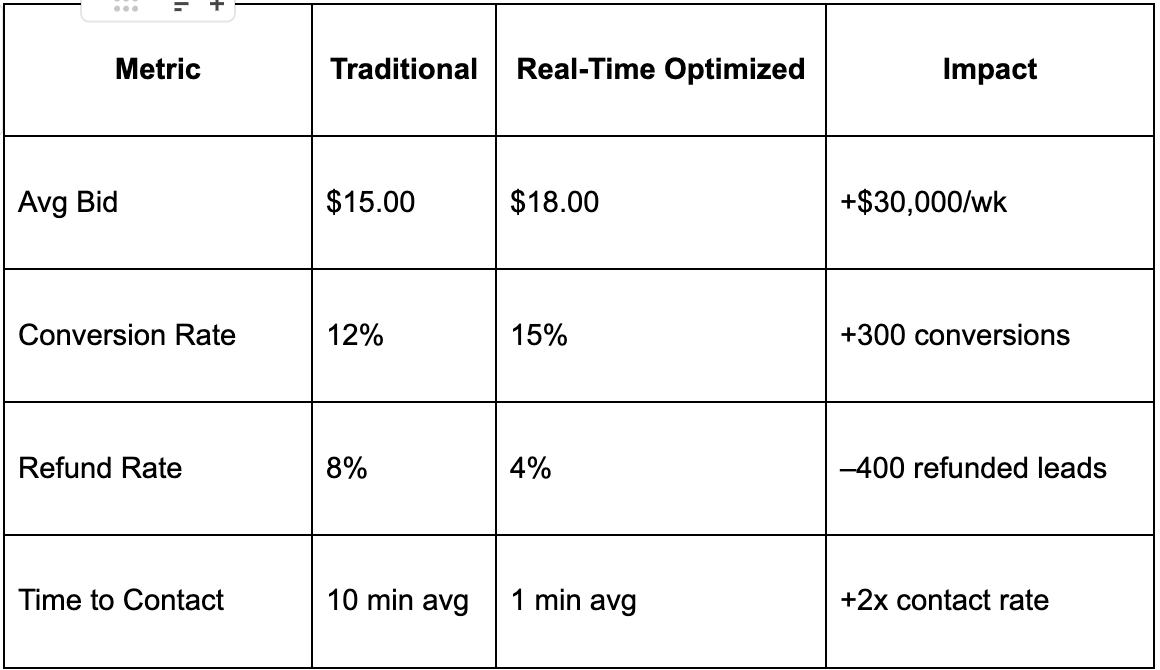In performance marketing – whether you're dealing with insurance, solar panels, home services, or money stuff – how you hand over a lead is just as critical as the lead itself.
A lot of places still use old-fashioned lead delivery: they grab a bunch of leads, send them to buyers or salespeople all at once, and hope something sticks.
But now, with everyone fighting for customers, every second matters, and every wrong match costs cash.
That's why it's getting more and more important to send leads in real-time, mainly through platforms like Standard Information. They're built for speed and getting things right.
1. Speed = Freshness = Better Sales
What's the problem?
Leads get worse every second after someone fills out a form Interested?
- If you call a lead within a minute, they're way more likely to buy compared to calling after 30 minutes.
- Wait just 5 minutes, and you're much less likely to even reach them..
Old-School Way:
Process leads in batches → Send them later → Sales folks call way later
Result: Old leads, fewer people answering, missed chances.
Real-Time Way:
Someone fills out a form → Buyers find out right away → The best buyer wins → The lead is sent super fast
Result: Contact happens in 30–60 seconds.
Speed isn't just nicer; it gets you sales.
2. Fit: Smart Sending = More Profit
Not every buyer wants every lead. Usually, leads are sent randomly or based on simple things like ZIP codes. But with ping post that works in real-time:
- Buyers make offers based on what they want (like location, score, or product).
- The system only sends leads to buyers who want them right then.
- Sellers make more by finding the perfect match at the best price.
Everyone wins with this:

3. Catching Mistakes to Avoid Waste
The great thing about sending leads in real-time isn't just how fast it is, it's the feedback you get.
With platforms like Standard Information:
- Each lead gets a score based on different things (like how good the lead is, where they're from, what they did on the form, their IP address, and when they filled it out).
- Buyer stats on sales and refunds go back into the system.
- Bad leads get taken out or sent somewhere else.
- Good buyer-lead matches get sent more often.
Over time, the system gets wiser and makes more money.
4. The Numbers: Small Changes = Big Money
Let's say you get 10,000 leads each week. Here's how small wins add up:

Over a year, these little tweaks can add up to over $1 million in extra income.
5. Real-Time Sending = Flexible Tiers
Some buyers are better than others. With data-driven tiers, ping post platforms can:
- Send more leads to buyers who close deals and always pay
- Send fewer leads to those with lots of refunds or bad performance
- Add rules live (like only give scored leads to Buyer A or don't send leads to Buyer B if they haven't been closing deals lately)
These rules change in real-time, so the best leads constantly go to the best buyers.
6. Getting the Most from Ping Post Auctions
Here's how ping post works:
- Ping = send some lead info to a bunch of buyers
- Buyers send back offers (how much they'll pay)
- Post = send the lead to the buyer who offered the most
But with data added, the system can:
- Make high-refund buyers pay more
- Send leads to fast-contact buyers first
- Try other options if a top buyer is offline
This makes sure every lead goes for the highest possible price.
7. The Problem with Old-Fashioned Campaigns
Lead campaigns that don't change fail when:
- Buyer needs change (but leads still go to the same place)
- Leads are sent without checking current performance
- Updates take forever to happen
But real-time platforms update instantly:
- Buyer settings change on the fly
- Sending reflects new rules right away
- Volume goes to where there's profit, not just who's available
This is a must when you're dealing with lots of leads.
8. Real-Time Sending = Safe and Compliant
With regulations getting stricter (like TCPA, DNC, and state laws), real-time lead systems can:
- Check leads automatically before sending them to buyers
- Stop bad leads from being sent
- Be sure buyers only get leads that match their consent and filters
Rules are automatic, not after the fact, which protects everyone.
For example, platforms like Standard Information can work with tools that check leads, validate consent, and follow time-zone rules—all before a lead is ever sent.
9. Why Old CRMs Can't Handle Lots of Leads
Here's why old-school CRMs and marketing tools aren't good enough:

If you're serious about leads, CRMs can't handle how many you have.
10. How Standard Information Makes Lead Sending Better
Standard Information is made for lead sellers who need:
- Ping post auctions in real-time
- Smart sending based on how buyers are doing
- Complete views of buyer sales, refunds, and contact speed
- Tools, validation, and compliance integrated through APIs
It makes earning from every lead faster, safer, and smarter.
In short: Real-Time Sending Helps You Grow
Sending leads in real-time isn't just a tech thing; it's a game-changer. You get:
- Better lead value by matching leads to the right buyers
- Fewer refunds and wasted contacts
- Live info on how buyers and sources are doing
- Faster contact, better sales, and great ROI
If you're still using static sending, you're not just losing money; you're missing out on info, growth, and an edge over the competition.
FAQs
Q1: What's real-time lead routing all about?
It's getting leads to buyers or agents fast, immediately after someone fills out a form. Companies like Standard Information match leads to the best buyer ASAP, leading to more sales and money.
Q2: How is this different from just sending leads the regular way?
The regular way is sending leads in batches or later. Real-time routing acts instantly, checking buyer offers and performance for faster contact, fresher leads, and better outcomes.
Q3: Why is being quick so important?
Quick contact means a higher chance of a sale. Calling within a minute significantly boosts chances compared to calling half an hour later. Real-time routing prioritizes new leads to top buyers while they're still interested.
Q4: How does Standard Information make real-time routing better?
Standard Information combines instant auctions, live stats, and compliance. It adjusts lead sending based on buyer performance, refund rates, and response speed, ensuring each lead goes to the most likely closer, resulting in more money, fewer returns, and faster responses.